On View
6 Viral Images That Sparked Social Change From the International Center of Photography
These images influenced climate change, gender fluidity, and other issues.
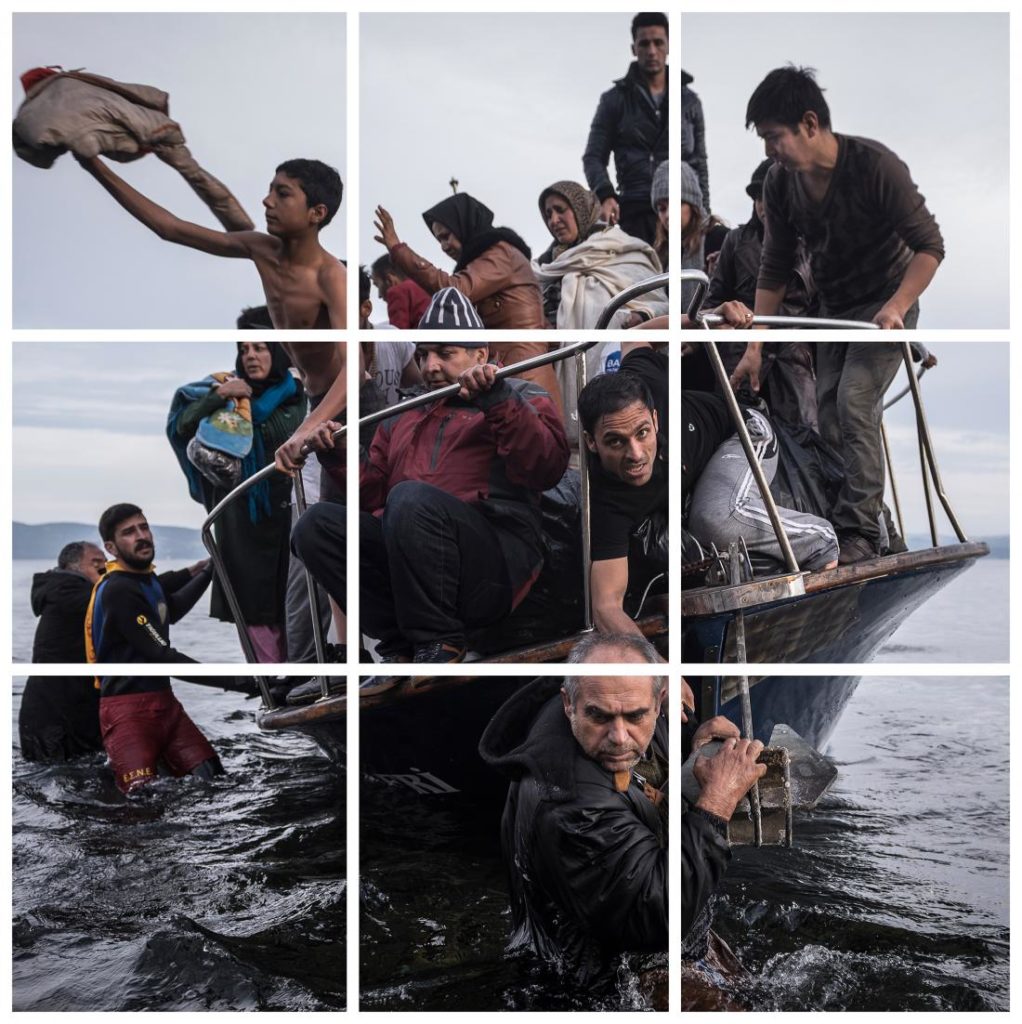
These images influenced climate change, gender fluidity, and other issues.

Sarah Cascone

In the age of social media, images are more powerful than ever. Such is the unifying theme of “Perpetual Revolution: The Image and Social Change,” the second exhibition at the International Center of Photography’s new Bowery home.
The show’s title reflects an era in which viral images can traverse the globe in mere seconds, both documenting current events and influencing them. The museum, which believes that “an ongoing revolution is taking place politically, socially, and technologically,” focuses on such critical issues as #BlackLivesMatter, gender fluidity, climate change, ISIS propaganda, the plight of refugees, and the right-wing fringe during the presidential campaign.
Throughout the history of the medium, photographers have worked to affect social change with varying degrees of success. “That is happening now,” exhibition co-curator Carol Squiers told the press at a January 25 preview of the show, “but it’s not all good social change.” ISIS, for instance, is “very brand conscious” and has worked to recruit photographers and videographers to help produce propaganda promoting its cause.

William Anders for NASA, Earthrise. Courtesy of NASA.
Although the exhibition’s final section, titled “The Right-Wing Fringe and the 2016 Election,” was added following Donald Trump’s unexpected victory, the show as a whole is very much bound up in the issues that dominated the divisive campaign cycle.
Speaking to artnet News, the museum’s executive director, Mark Lubell, compared Trump’s successful embrace of social media to President John F. Kennedy’s dominant performance in the first televised debate, held in 1960. Famously, radio listeners gave the win to his opponent Richard Nixon, but those who watched favored Kennedy’s performance.
While Lubell didn’t see Trump’s win coming, the museum’s exhibition research conducted ahead of November’s election found that “every single social media stat favored Donald Trump,” he noted. The issues covered by “Perpetual Revolution,” Lubell believes, “were big motivators for Trump’s audience in a way we didn’t understand.”
The exhibition doesn’t just draw from viral memes, however, diving into the museum’s collection to present historical images that have been similarly influential. The iconic 1968 Earthrise image taken by NASA during the Apollo 8 mission to orbit the moon, for instance, is credited with building support for the environmentalist movement by showing the earth from unprecedented remove, a fragile and isolated body in the dark vacuum of space.
Here’s a look at six other images, taken from each section of the exhibition, that reflect the power an image has in contemporary society.
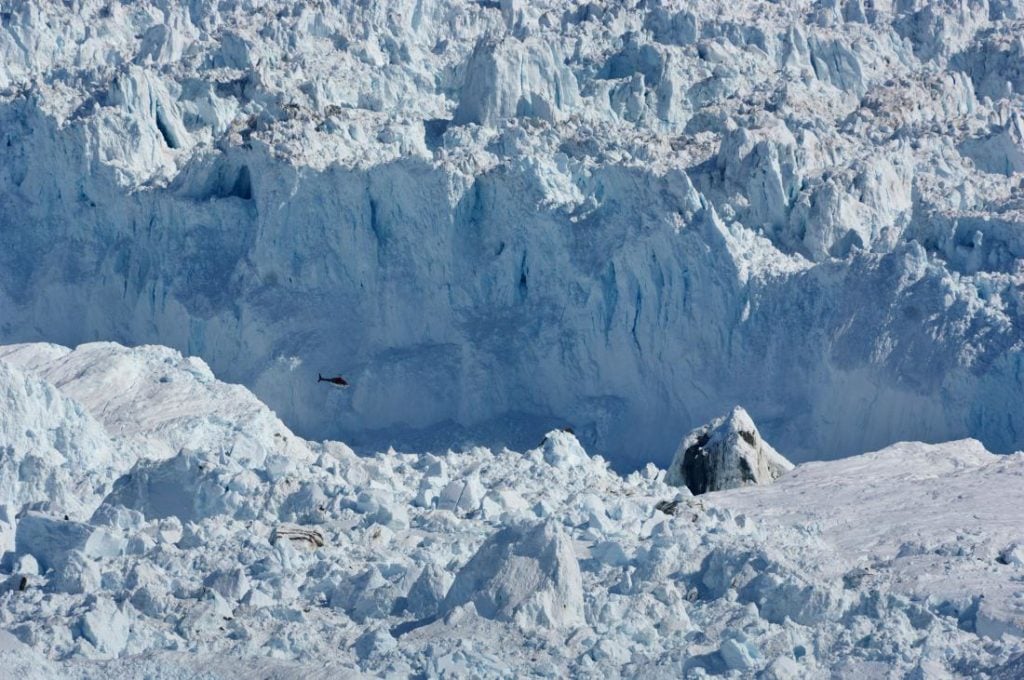
James Balog, Chasing Ice (2012), video still. Courtesy of Chasing Inc., LLC/the International Center of Photography.
1. Climate Change – James Balog, Chasing Ice
In 2012, James Balog uploaded a short clip from his 2008 film, Chasing Ice, showing the melting Ilulissat glacier in Western Greenland falling into the sea, to YouTube. According to the narrator, it depicts “the largest witnessed calving event ever caught on tape,” featuring an area the size of Lower Manhattan. It has since attracted over 40 million views, according to co-curator Cynthia Young.
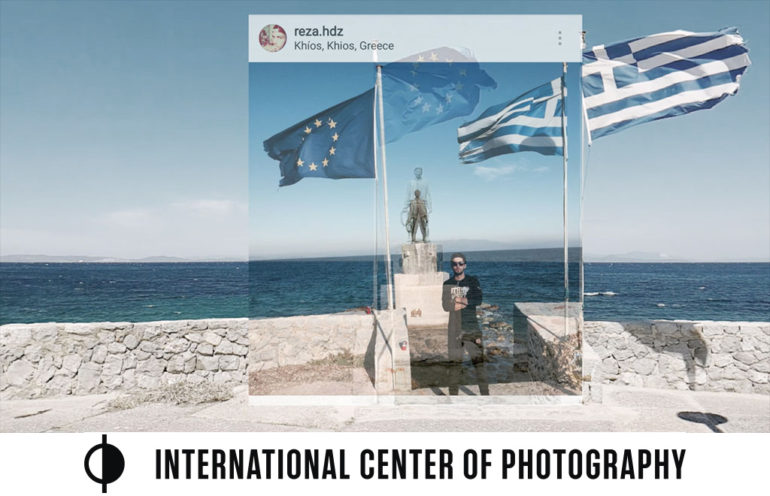
Tomas van Houtryve, Traces of Exile. Courtesy of Tomas van Houtryve.
2. The Flood: Refugees and Representation – Tomas van Houtryve, Traces of Exile
With geotagged photos from Instagram as his guide,Tomas van Houtryve has traced the footsteps of migrants fleeing the Middle East. Traces of Exile layers photographs taken in various camps and checkpoints and shared on social media over documentary footage shot by the artist.
Don’t let the subject’s cheerful, well-groomed faces fool you into thinking that the refugee experience is anything less than harrowing, warned co-curator Joanna Lehan: “The fact is they’re portraits of survival… we all want to put our best foot forward and project images of strength.”
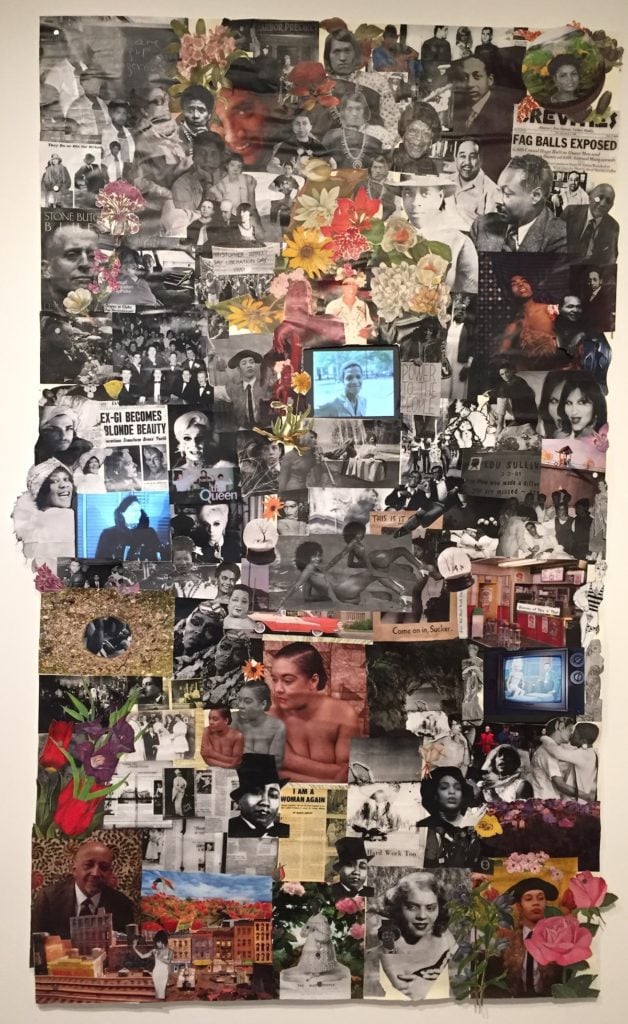
Darnell Davis and Zachary Wager Scholl, we went looking for our friends (2016). Courtesy of Darnell Davis and Zachary Wager Scholl.
3. The Fluidity of Gender – Darnell Davis and Zachary Wager Scholl, we went looking for our friends
Darnell Davis and Zachary Wager Scholl scoured the internet for historic images of gender non-conforming persons, who have only been able to form a larger community with the advent of the world wide web, to create this massive collage.
Seeking out such little-known images, such as that of a 1886 photo of Zuni Native American We’wha, a “two-spirit” understood to have a mixed gender, is a way to “retrace and recapture our own identity” said Quito Ziegler, a gender non-conforming curator who collaborated with Squiers on this section of the exhibition. “It’s like creating history where there hasn’t been any.”
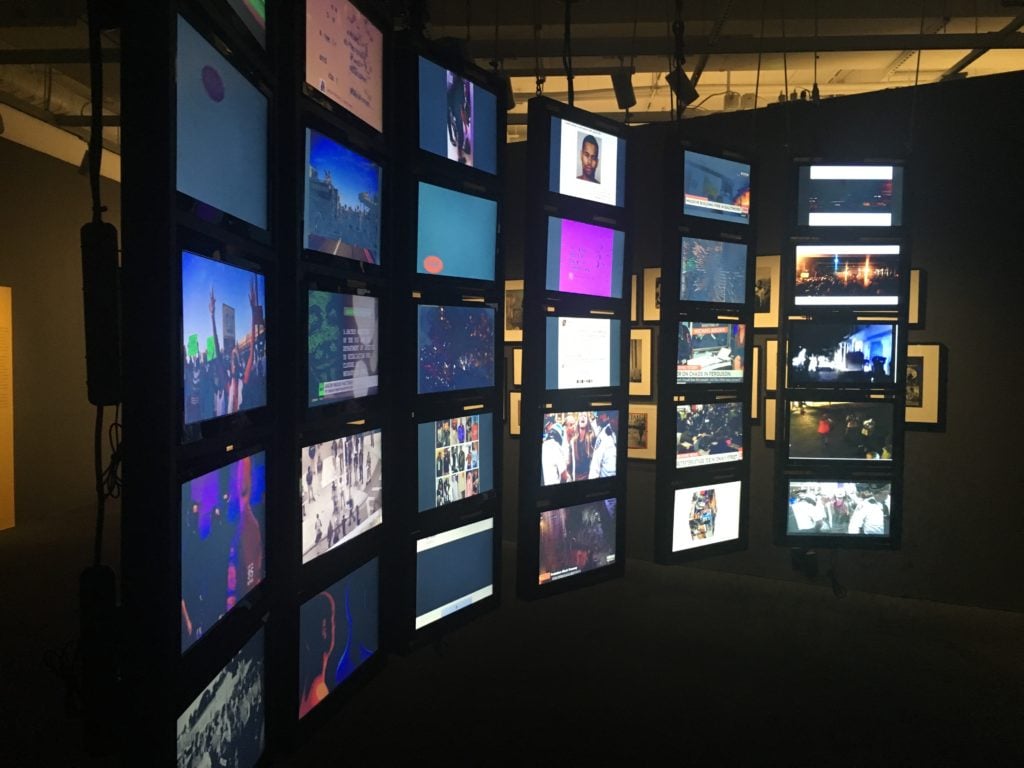
HOWDOYOUSAYYAMINAFRICAN?, thewayblackmachine (2014). Courtesy of HOWDOYOUSAYYAMINAFRICAN?
4. Black Lives (Have Always) Mattered – HOWDOYOUSAYYAMINAFRICAN?, thewayblackmachine
A collective of artists, writers, academics, and other creatives who participated in but later protested the 2014 Whitney Biennial, HOWDOYOUSAYYAMINAFRICAN? has tirelessly compiled video footage shared on Twitter under #Ferguson, in response to the 2014 death of 18-year-old black man Michael Brown at the hands of the police. The protests that followed jump-started the Black Lives Matter movement.
Displayed on an imposing wall of 32 television screens, the footage is overwhelming, both visually and emotionally. Co-curator Kalia Brooks has paired the piece with archival images from LIFE magazine, as a way to “think about the civil rights movement as a continuum.”

ISIS, No Respite. Courtesy of International Center of Photography.
5. ISIS and the Terror of Images – No Respite
Squiers had to delve deep into the dark web to track down ISIS propaganda, which shows the terrorist group—extremists who do not follow the true teaching of the religion they espouse—aiding school children, building markets, and running hospitals in their so-called khilalah, a Utopian Islamic state. She’s chosen not to feature the gruesome beheading videos perhaps best known to Western audiences, because “my interest was in unmasking them… I think you have to know your enemy.”
In No Respite, ISIS paints a picture of its military strength, mocking the efforts of America and its allies to defeat it. “We continue to haunt the minds of your soldiers and sow fear into their hearts,” intones a dramatic narrator over a series of quickly inter-cut images. “Bring it on, all of you—your numbers only increase our faith.”
6.The Right-Wing Fringe and the 2016 Election – The Deplorables
Co-curators Susan Carlson and Claartje van Dijk examine the beliefs driving the agenda of the so-called alt-right, a fringe group of white supremacists who rallied behind Trump, through a selection of images shared on social media. They’ve broken it down into three categories: the right’s pushback against what they see as paralyzing political correctness, the belief that white culture is under siege, and related posts shared by Trump and his circle, such as this “Deplorables” image, featuring neo Nazi-appropriated icon Pepe the Frog, posted by his son, Donald Trump Jr.
“Perpetual Revolution: The Image and Social Change” is on view at the International Center of Photography, 250 Bowery, January 27–May 7, 2017.